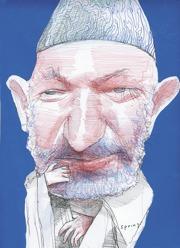
Everything that could possibly go wrong in Afghanistan has gone wrong over the past two months. The industrial-level rigging and manipulation of the August 20 election—largely by the government of President Hamid Karzai—could have dealt a death blow to international involvement in Afghanistan, as it entered its ninth year. Worse, it occurred just as the Taliban were ramping up their insurgency and Afghans were becoming even more disillusioned with their government than usual. So how did the US and its allies manage to convince Karzai this week to agree to a run-off election?
Last month the Independent Election Commission—an Afghan body appointed by Karzai himself—gave him 54.6 percent of the vote and his main rival, Abdullah Abdullah, only 27.7 percent. But in view of widespread reports of fraud, Abdullah, Afghans, and the entire international community refused to accept this result until a UN appointed complaints body called the Electoral Complaints Commission had done a recount.
Despite open hostility and threats from Karzai’s supporters, the ECC threw out more than one million votes cast for Karzai after recounting some 10 percent of suspicious ballot boxes, investigating 600 allegations of fraud, and discounting some 600 stuffed ballot boxes. Karzai’s Commission fought back until the last moment.
Finally Karzai was awarded 49.7 percent of the vote—less than 50 percent. So according to the Afghan constitution a run-off with Abdullah, who now has 31 percent, will take place on November 7. The hope is that it will be conducted more fairly than the August poll. The second round is going to be extremely difficult to undertake given the strength of the Taliban insurgency, fears of additional rigging, and ethnic tensions between Pashtuns supporting Karzai and non-Pashtuns supporting Abdullah.
For the international community and in particular the US, the main issues were how to create legitimacy out of a flawed poll, move forward with a new Afghan government in place that will fight corruption, and use that progress to convince voters back home to back sending still more Western troops to Afghanistan. Half of the top district officials (two hundred out of 380) who organized the fraud have now been fired and will be replaced in the next two weeks.
The final key to this temporary resolution is owed perhaps to the efforts of three dogged Americans. On the ground in Kabul, US Ambassador Karl Eikenberry, a six-foot former general and stalwart of the Afghan wars since 2001, and Senator John Kerry, Chairman of the Senate Foreign Relations Committee, spent twenty hours over four days trying to convince Karzai to agree to a re-run.
In Washington there was White House Chief of Staff Rahm Emanuel: every time he opened his mouth (so Karzai had been assured), his words were coming directly from Obama. What perhaps finally brought Karzai into the real world was Emanuel going public with a statement on October 18—which Kerry had been privately drumming into Karzai for days—that Obama would not commit to sending any more US troops to Afghanistan until there was a “legitimate” and “new” government in Kabul.
The underlying message was that if Karzai still refused to listen he could be held responsible for allowing Afghanistan to go down the tubes or be taken over by the Taliban. Even though Karzai has a gigantic ego and was still in a state of denial, he could not get around that one.
Kerry, Eikenberry, and Emanuel had one thing going for them that others working the Afghan shift in the White House—Richard Holbrooke, Joe Biden, James Jones, General David Petraeus, and even Obama himself—did not have. These three had never criticized Karzai in public before. Karzai intensely dislikes the other White House players because they have hurt his ego by dishonoring him and criticizing him in public. Over such knowledge and niceties does the world turn and turn again.


